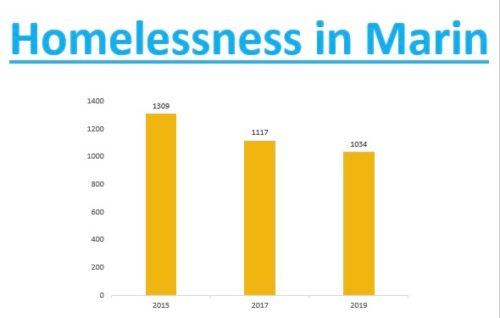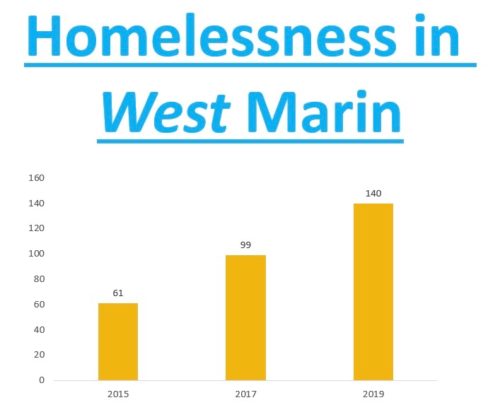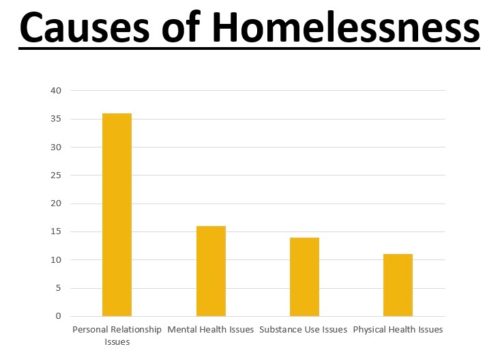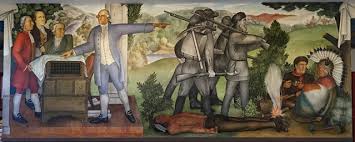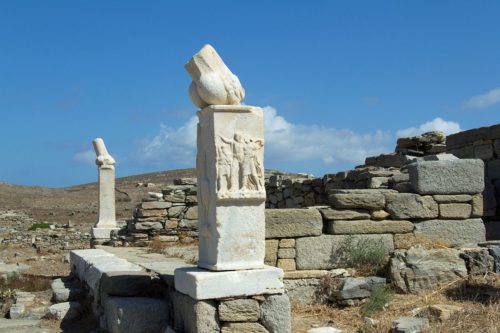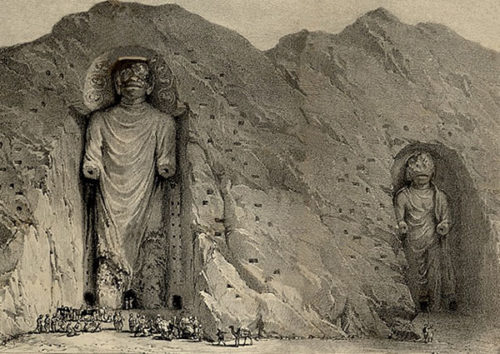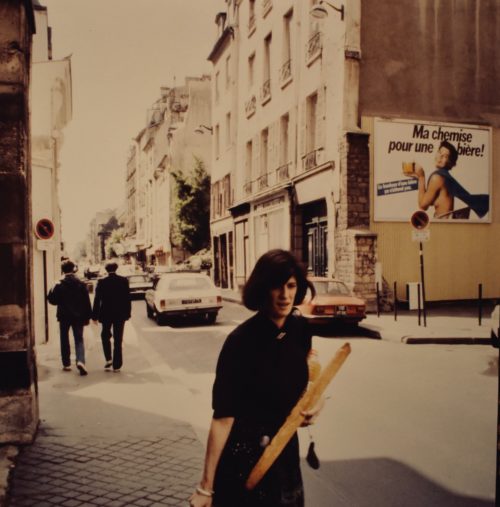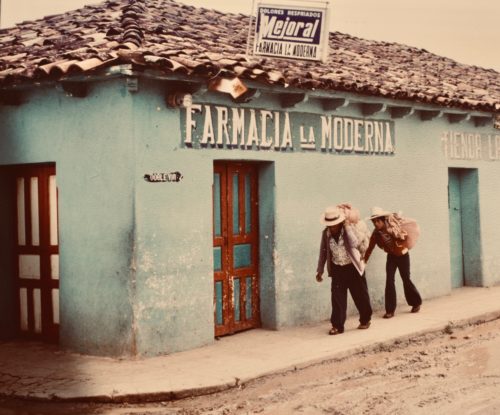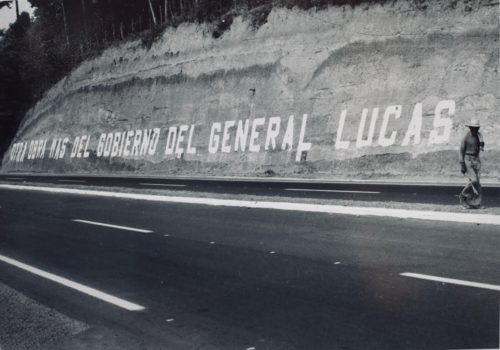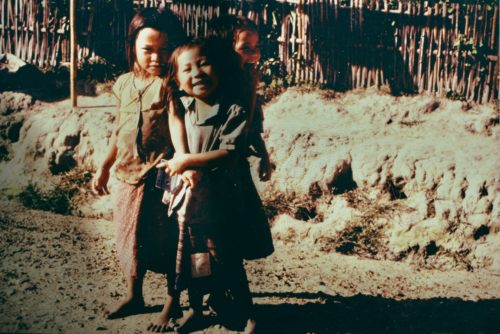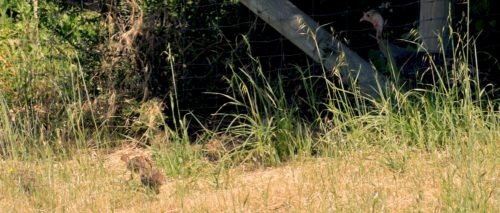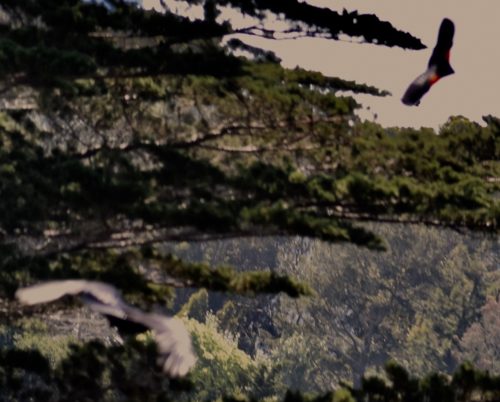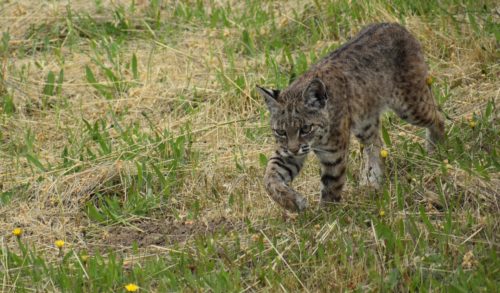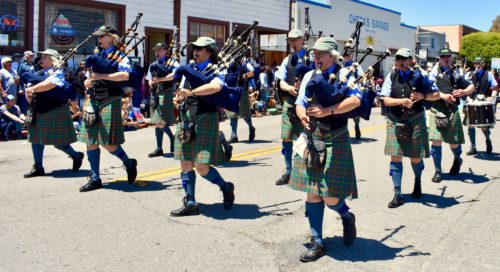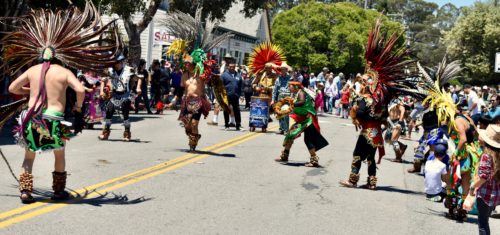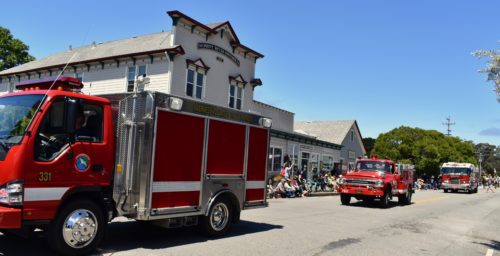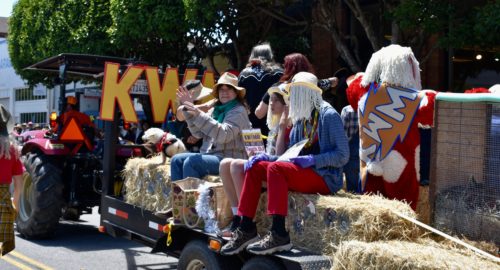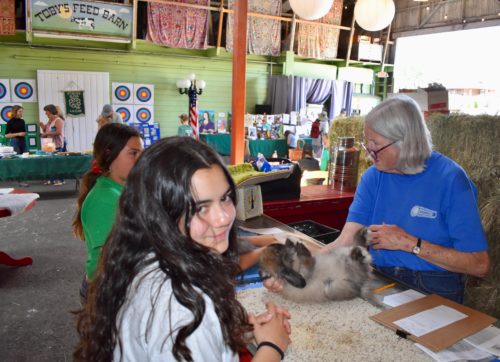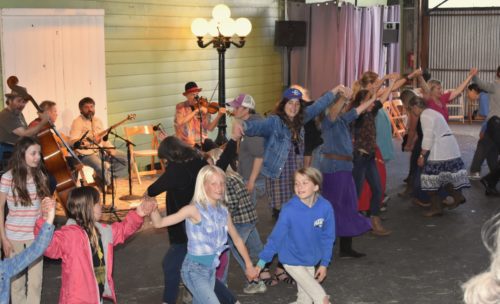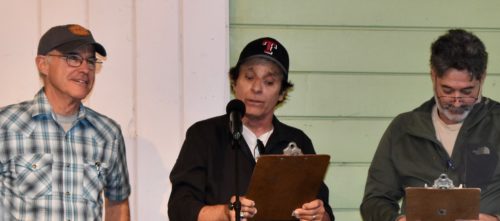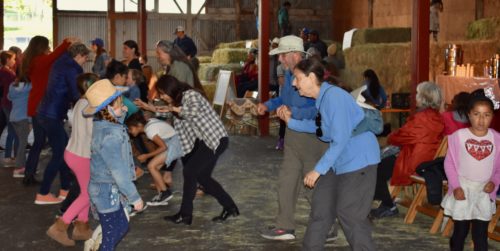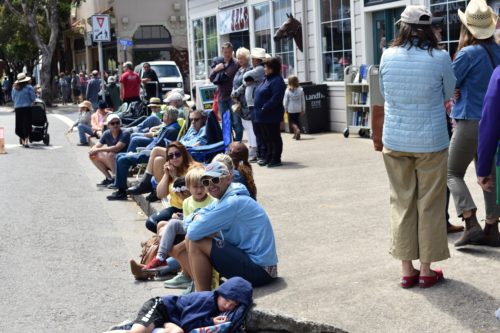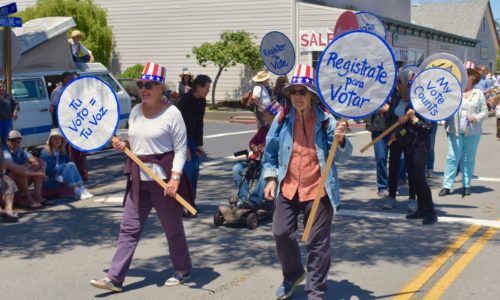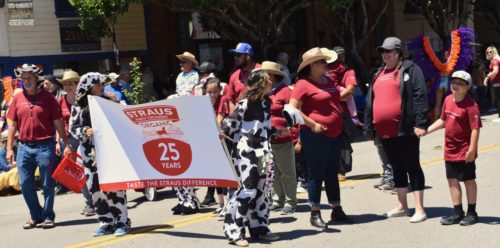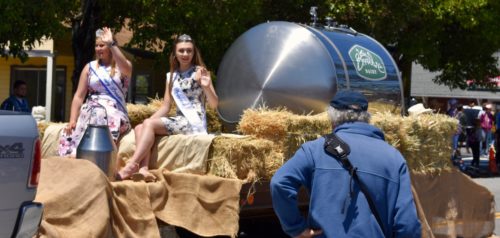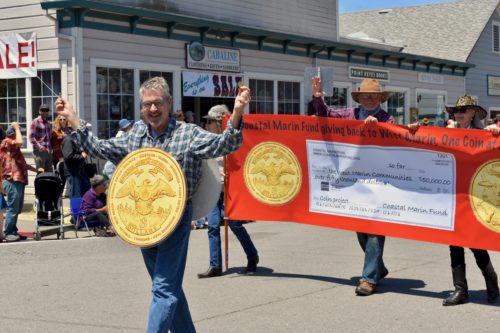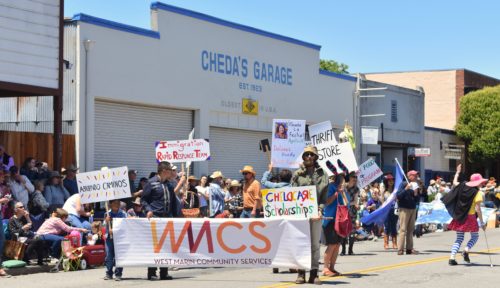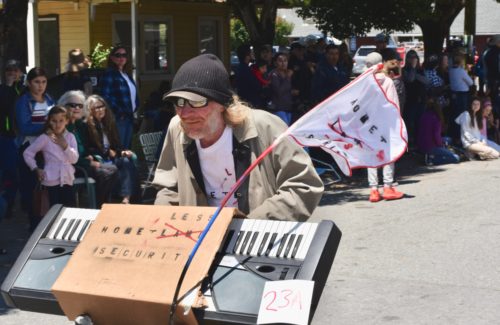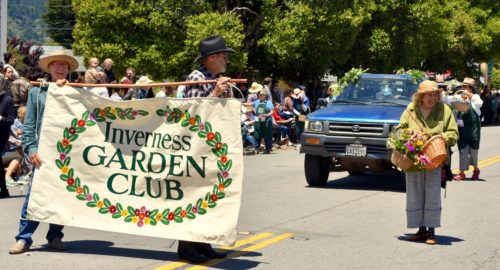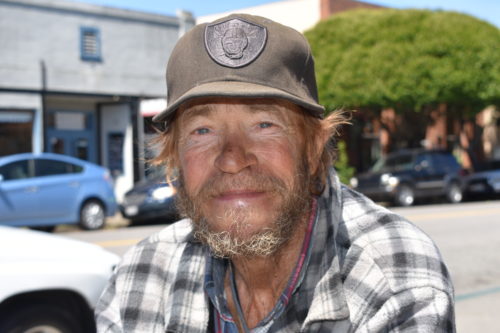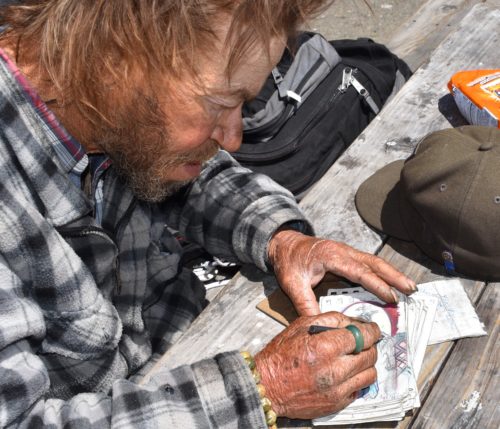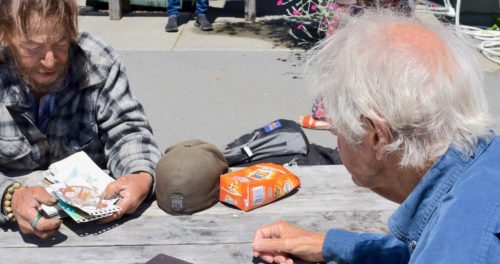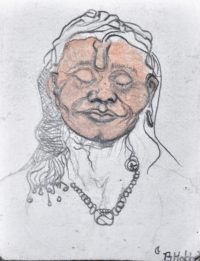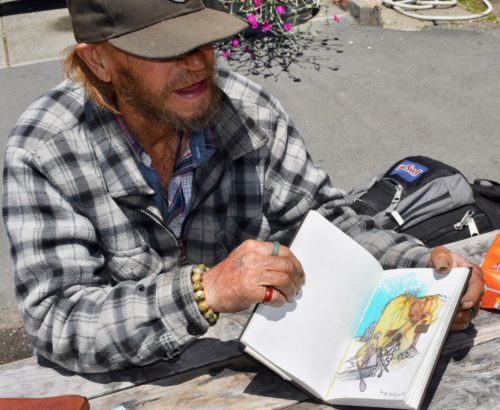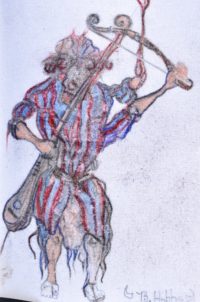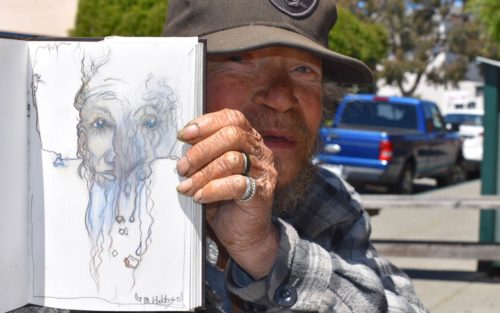Caveat lectorem: When readers submit comments, they are asked if they want to receive an email alert with a link to new postings on this blog. A number of people have said they do. Thank you. The link is created the moment a posting goes online. Readers who find their way here through that link can see an updated version by simply clicking on the headline above the posting.
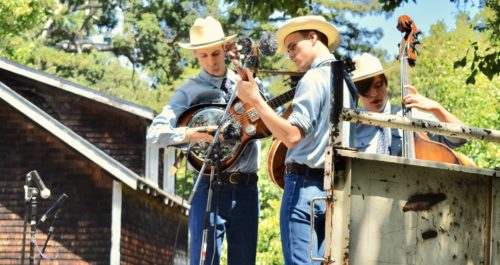
A trio of East Bay bluegrass musicians known as Fog Holler on Saturday afternoon serenaded an enthusiastic crowd sitting on the lawn next to the Inverness Firehouse.
Inverness has been holding community fairs off and on since 1946, and sometimes pausing for years. The fairs, for example, stopped from 1950 to 1953.
In the June issue of Under the Gables, which is published by the Jack Mason Museum of West Marin History in Inverness, Meg Linden writes that “in 1953 there was a community fair sponsored by the Inverness Improvement Association and many other community groups, including the Inverness Garden Club, the Volunteer Fire Department, the PTA, the Inverness Recreation Council, and St Columba’s.
“In addition to normal fair activities, games, food, items for sale, it included a demonstration of military hardware by the Sixth Army Anti-Aircraft Unit from Fort Barry [Sausalito].” After that, there were no more Inverness Fairs until 1965 when an elaborate celebration was held at St. Columba’s Episcopal Church.

Bill Barrett, a director of the fair’s sponsor, the Inverness Association, told the crowd a bit of the Inverness Fair’s history.

People and dogs paced around a circle during two cake walks. When the music stopped, so did the walkers. The number under people’s feet when they stopped determined who the winners were, with the winners receiving cakes.

Martha Martinez, assistant program manager at West Marin Community Serves, serves a tostada in a booth beside the firehouse.

Kids encountering kids. Youngsters were fascinated by two young goats being tended by Kegan Stedwell. Inverness Fire Capt. John Roche brought the kids (at right) with him to the fair.

A used-book sale outside the Inverness Library raised funds for the library.

Inverness Garden Club as always sold a variety of plants during the fair.
Numerous nonprofits and local craftspeople lined Inverness Way with booths selling everything from oysters to jewelry to handwovens.
It was a day to put aside our cares. At the Outside Lands Festival, which was being celebrated at the same time in Golden Gate Park, “no fewer than 23 metal detectors awaited customers at the main gate,” The San Francisco Chronicle reported. “Beefy guards checked pockets, purses and packs.” The paper quoted San Francisco Police Chief Bill Scott as saying, “We are addressing the current incidents that have occurred in the state, country, and world.”
In Inverness, however, the world on a sunny Saturday seemed far away. There were no metal detectors or searches for guns. Nor did I see a single cop. In fact, several people expressed relief at being able to escape, at least for a day, the chaos of national affairs.




